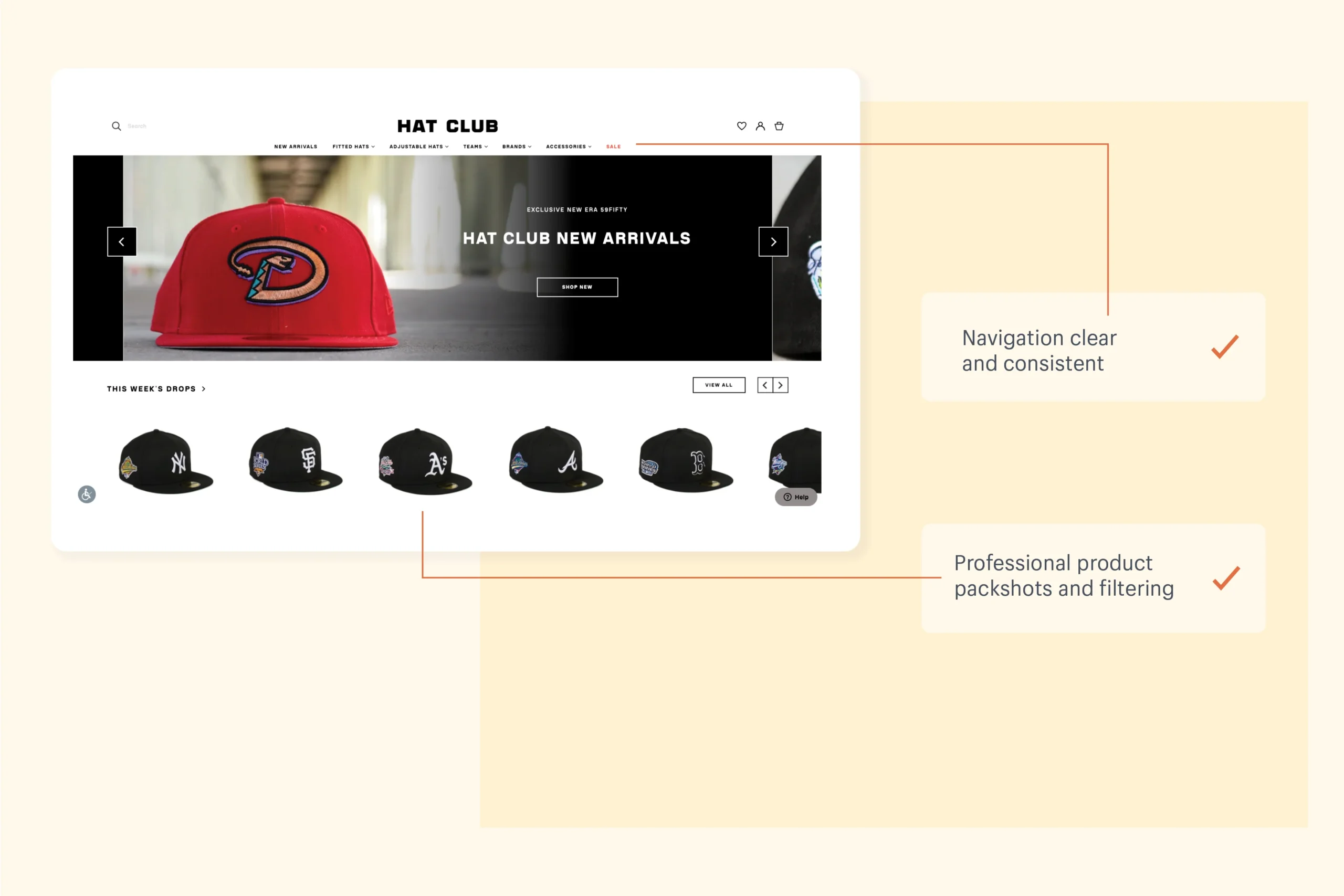Shopify Survey Reveals Design Secrets to Building Trust & Converting First-Time Shoppers

Ever wondered what makes online shoppers trust a new store enough to buy (especially with all those scammy websites out there)? We get it! Shopify conducted a groundbreaking survey of North American shoppers to crack this very code.
Here’s the twist: Participants not only talked about a recent unfamiliar purchase, but they even made real purchases on brand new Shopify stores (up to $40)!
Why? To uncover the design elements that build trust (or break it!) with online shoppers. Now, we’re sharing these golden nuggets of knowledge with you!
Get ready for a checklist to optimize your website design and convert more first-time visitors into loyal customers.
So now lets jump to how to build customer trust on your website
Gaining customer trust starts with the first impression. Building trust continues with the information you share and the social proof that backs up your claims.
Our findings show there are five essential ways an online store can establish and increase customer trust, beginning with first contact.
- Ace the first impression with your homepage
- Provide customers with essential information
- Share your story and why the business started
- Show current customer satisfaction
- Ensure the transaction is transparent and easy
1. Ace the first impression with your homepage
The Importance of a First Impression
In the world of ecommerce, your homepage is the digital handshake that welcomes potential customers to your store. Just like in real life, first impressions matter. A well-designed homepage can build trust, encourage exploration, and ultimately convert visitors into loyal customers.
Our findings reveal essential elements that shoppers want from a homepage, along with nice-to-have details that can further tip the scales in your favor.
What Customers Look For
When they land on your homepage, shoppers are asking themselves two key questions:
Is this website safe? High-quality visuals, polished content, and error-free copywriting throughout your entire site are essential for building trust and assuring customers they’re dealing with a legitimate business.
Can I find what I need easily? A clean and uncluttered layout is crucial, as is clear and intuitive category navigation. Think simple labels like “Shop,” “Women,” “Men,” “About Us,” and “Contact Us” to make it easy for visitors using any device to find the products they’re looking for.
Must-have
- Content that is consistent and polished, with high-quality photography and error-free copy present across the site
- A layout that is clean and uncluttered (important for North American shoppers)
- Category navigation that is easy to understand and use across all devices
Nice-to-have
- Category names in your navigation that are clear and easy to understand (e.g., Shop, Women, Men, About, Contact, etc.)
- When selling internationally, copy and content translated into the shopper’s language and prices listed in the local currency
- Fast-loading pages across your store, with no errors (shoppers usually only notice performance issues when pages are slow or broken)
2. Provide customers with essential information
Once customers navigate past your homepage, they typically head straight to a product page. Here, they transform from curious visitors into potential buyers, actively evaluating whether your products meet their needs. This is your chance to shine!
What Customers Want to Know
Does it solve my problem? Clear and concise product descriptions should highlight how your offerings address customer pain points.
Is it well made and the right fit? High-quality photos from multiple angles, size charts with conversion guides (when applicable), and detailed descriptions give shoppers confidence in their purchasing decisions.
Is the price fair? Transparency is key. Include all relevant details like pricing, shipping costs, and taxes upfront.
Must-have
- A variety of product photos for each product page
- Product descriptions organized into distinct sections for readabilityA size chart, preferably with size conversions, on your product page, when appropriate
- Recent product reviews and testimonials on the product page
Nice-to-have
- Return policy and shipping information included on the product page
- A product video included on the product page
- Desktop only: a “quick view” option on collections that allows customers to view the product without opening the product page
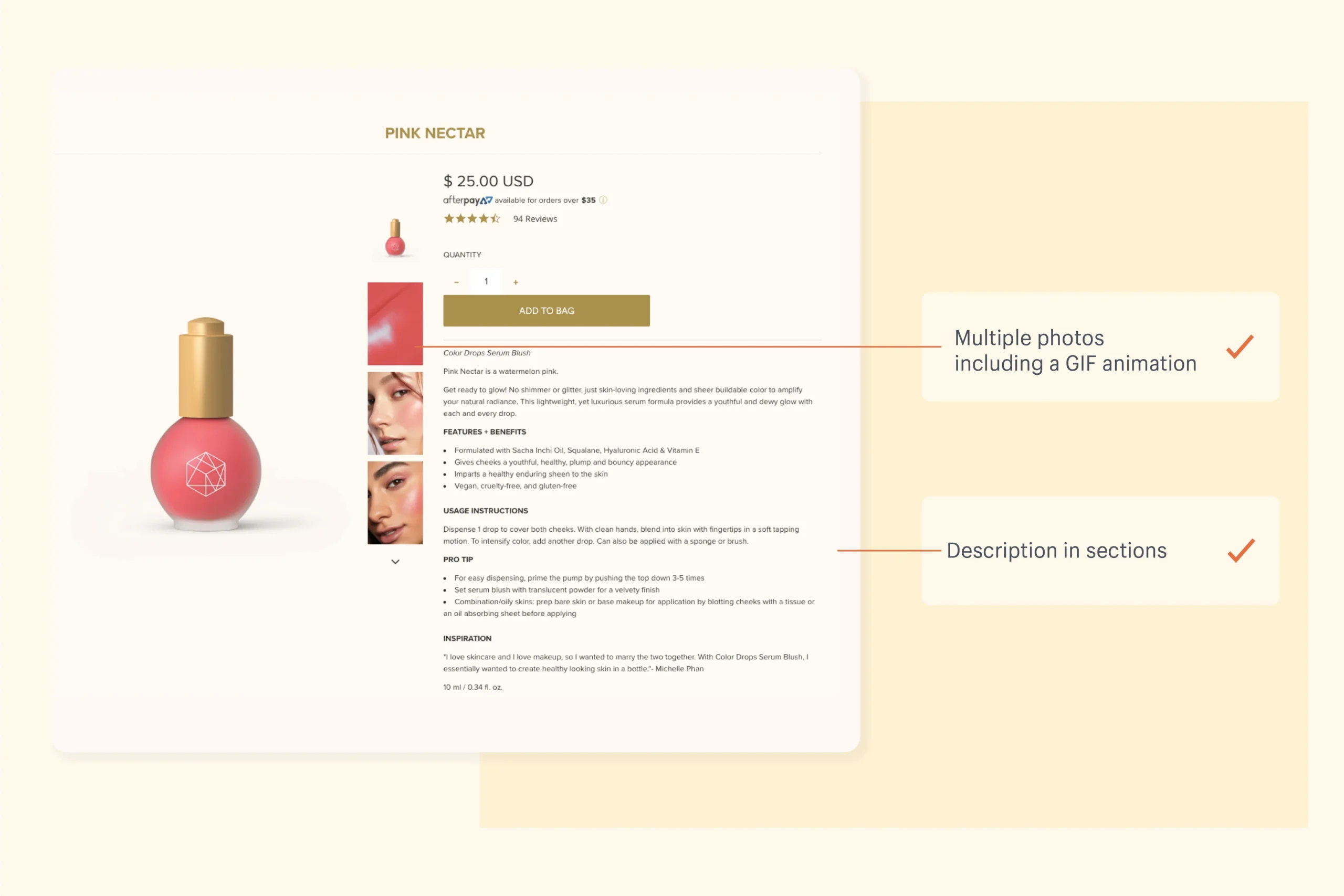
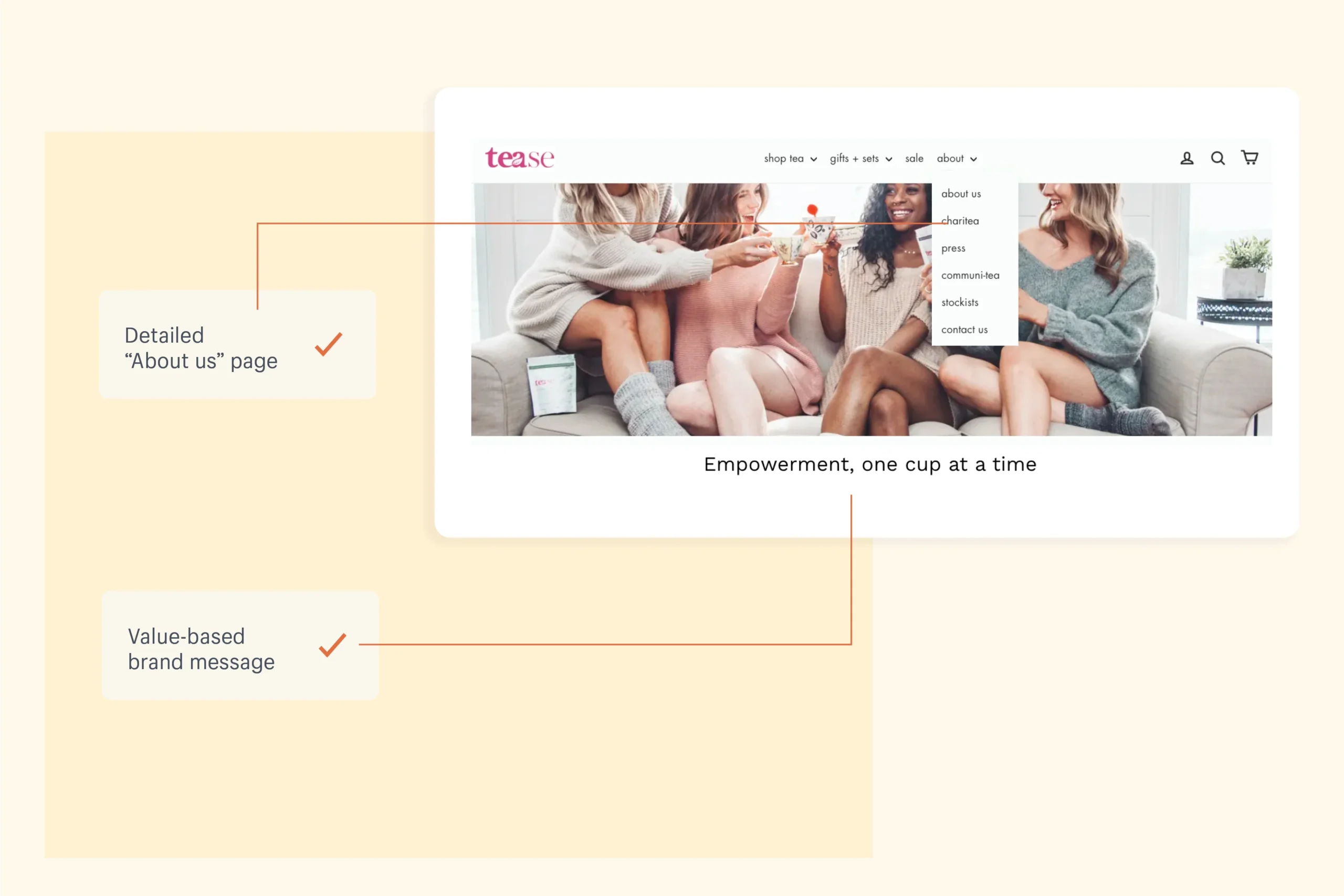
4. Show current customer satisfaction
In today’s online shopping landscape, customer reviews are king. They serve as powerful social proof, influencing buying decisions and building trust with potential customers.
What Customers Want to See
Authentic reviews: Shoppers value genuine feedback, not just glowing testimonials. They seek out impartial product and store reviews from real customers on various platforms.
Positive sentiment: Look for a healthy majority (70% or more) of positive reviews to showcase customer satisfaction.
In-depth feedback: Descriptive reviews that detail product quality and customer experience are highly valuable.
Social media engagement: A strong social media presence on platforms like Instagram and Facebook demonstrates a thriving community around your brand.
Must-have
- Positive reviews of products with a rating of 70% or more
- Product reviews posted on social media and external websites (e.g., Facebook, Google, Yelp, Amazon, eBay, etc.) that are mostly positive
- Product reviews that are descriptive about product quality and customer experience
- A social media following on Instagram, Facebook, or other platforms
Nice-to-have
- Product reviews that include photos and/or videos
- Product reviews for clothing/accessories/health and beauty that include the reviewer’s description of themselves (so shoppers can relate to review more)
- Links to the store’s social media profiles that are easily visible in the store
💡 Tip: Browse the Shopify App Store for a product reviews app that lets your customers upload multimedia to product reviews and testimonials.
One Example from https://www.shopify.com/blog/customer-trust-checklist
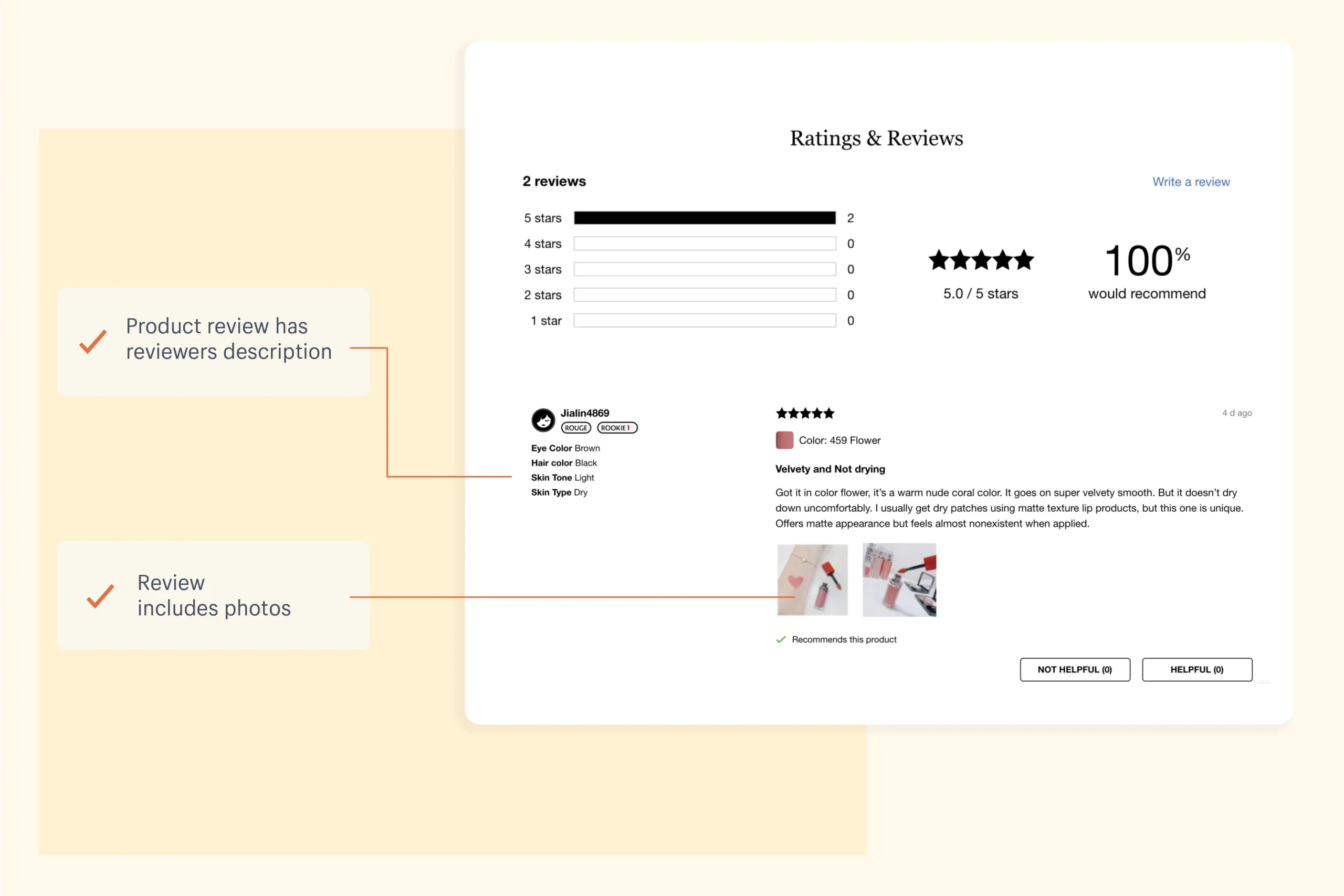
5. Ensure the transaction is transparent and easy
Customers value a smooth and transparent checkout process. Uncertainty about unexpected fees and a lack of clarity around final costs can lead to cart abandonment. Your goal is to remove doubt and streamline the checkout experience.
What Customers Want to Know
Upfront pricing: Display the total cost, including any applicable discounts, taxes, and shipping fees, as early in the checkout process as possible. No hidden surprises!
Familiar and secure payment options: Offer a variety of trusted and secure payment methods that your customers recognize and feel comfortable using.
Must-have
- A return policy that is clear and easy to understand
- When shipping internationally, a shipping policy that clearly states who pays duties and taxes
Nice-to-have
- Clear shipping costs
- Ability to apply discount codes in the cart and edit cart content
- Familiar payment methods (such as PayPal and Shop Pay)
- Optional order status tracking
- Rewards and discounts for future sales, surfaced on the order confirmation page
- For international stores, a language and currency switcher
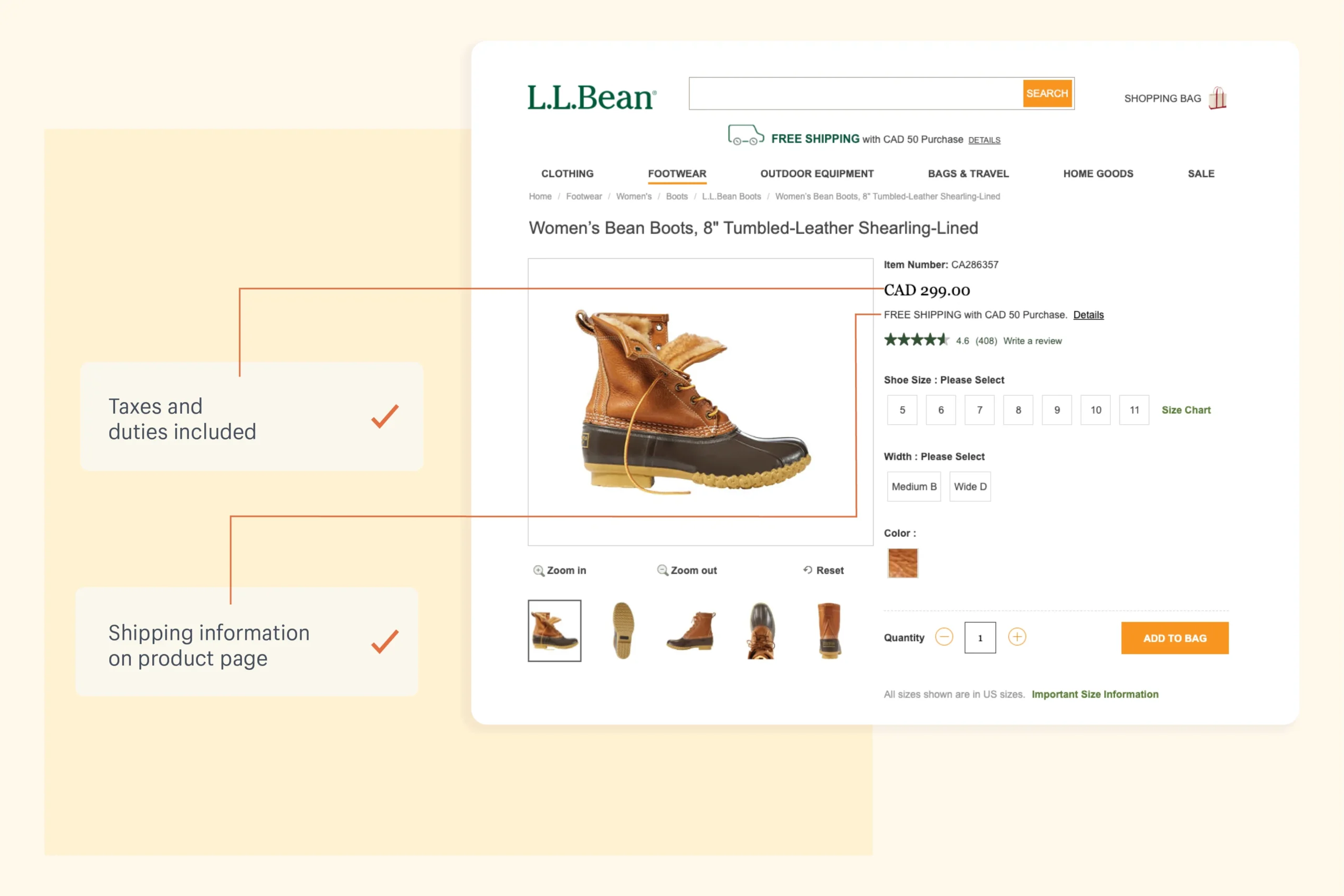
Customers reward businesses they trust
Earning customer trust is the cornerstone of any successful ecommerce business. While established brands may benefit from a pre-existing reputation, new businesses must actively cultivate trust to thrive.
Why Trust Matters
- Trust is a two-way street. Customers reward businesses they trust by returning for repeat purchases and recommending your brand to others.
- Perception is key. Remember, trust is earned, not a given. Focus on building positive customer experiences to shape a trustworthy brand image.
The Benefits of Trust
By prioritizing trust-building practices, you’ll create a welcoming and reliable online experience that keeps customers coming back for more. This translates to increased customer retention, potential for exponential growth, and a thriving ecommerce business.
Looking to create an ecommerce website that builds trust, captivates visually, and drives conversions? If you’re in Mumbai, India, and need a custom Shopify design and development solution, your search ends here! Our team of expert Shopify developers in Mumbai, India, is ready to transform your ecommerce vision into reality. Get in touch with us today for a complimentary consultation!
More Related Links
- Shopify Winter Edition 2024
- Unleash the Ecommerce Magic: How Shopify Developers Can Be Your Brand’s Secret Weapon
- Shopify Store Conversion Optimization: Unleash Your Sales Potential
About Author
 Meet Ritu, an expert writer in Shopify, ecommerce, and web development. Her articles provide insightful guidance navigating the online retail and web technology landscapes.
Meet Ritu, an expert writer in Shopify, ecommerce, and web development. Her articles provide insightful guidance navigating the online retail and web technology landscapes.

